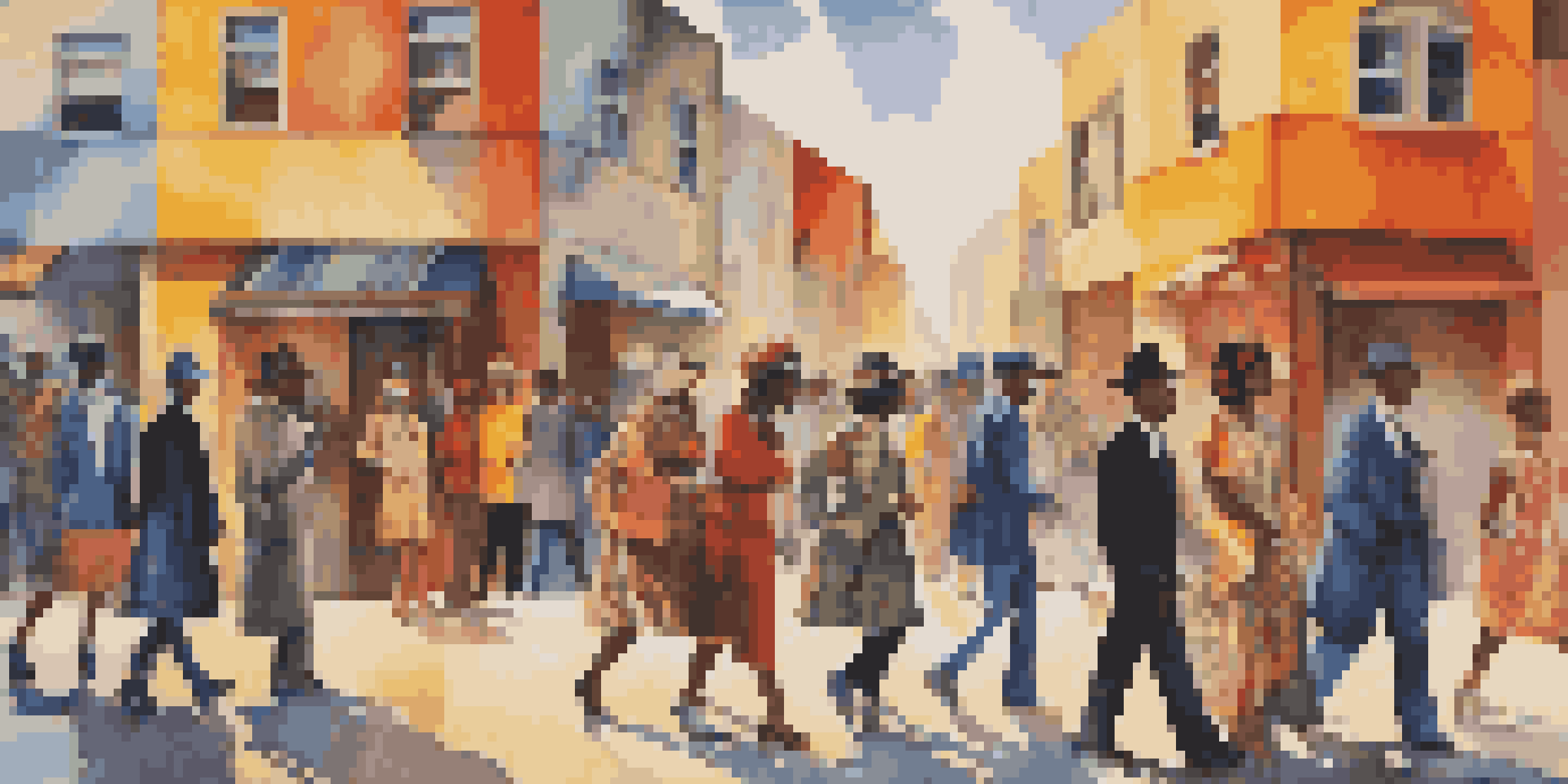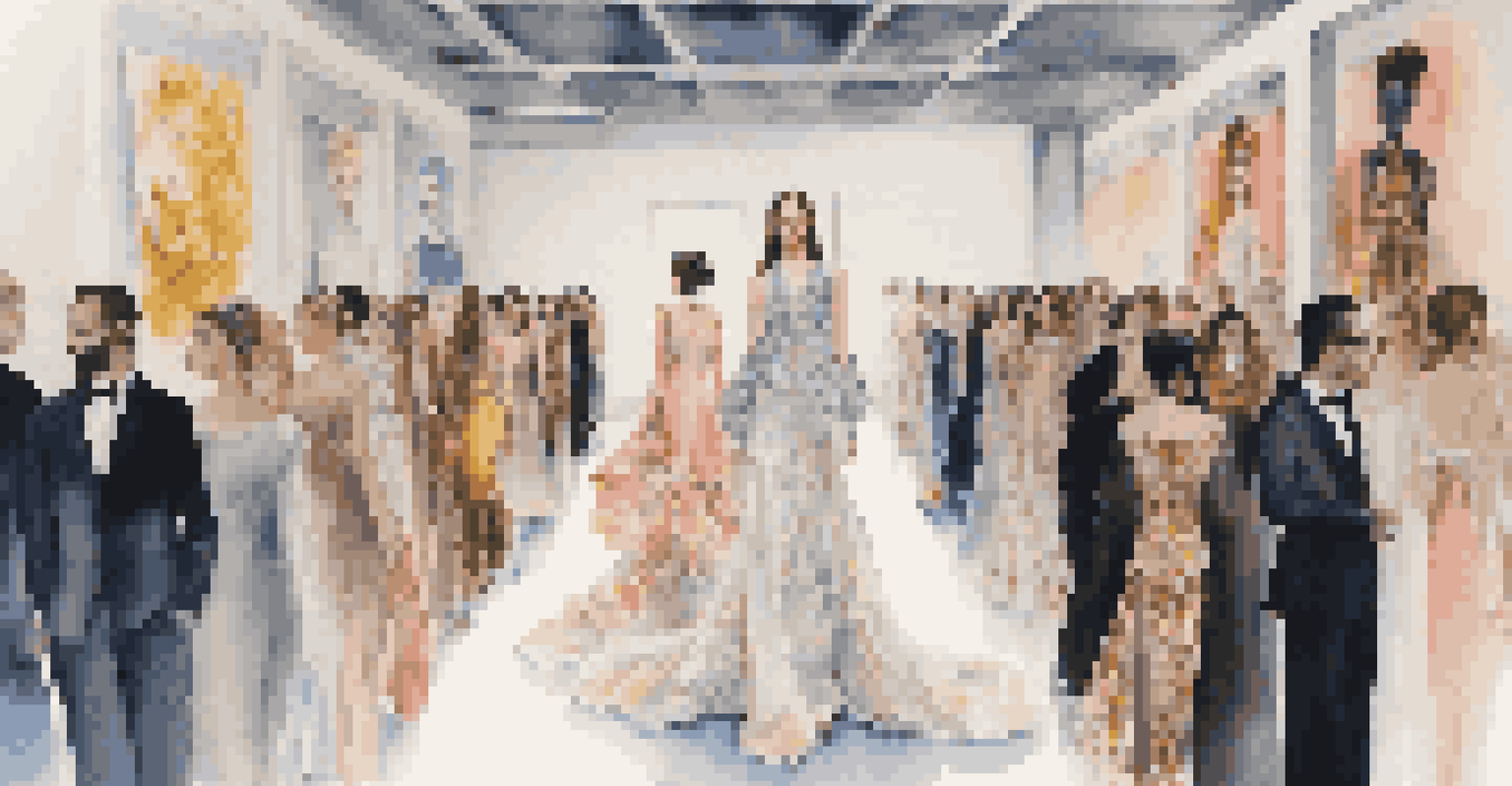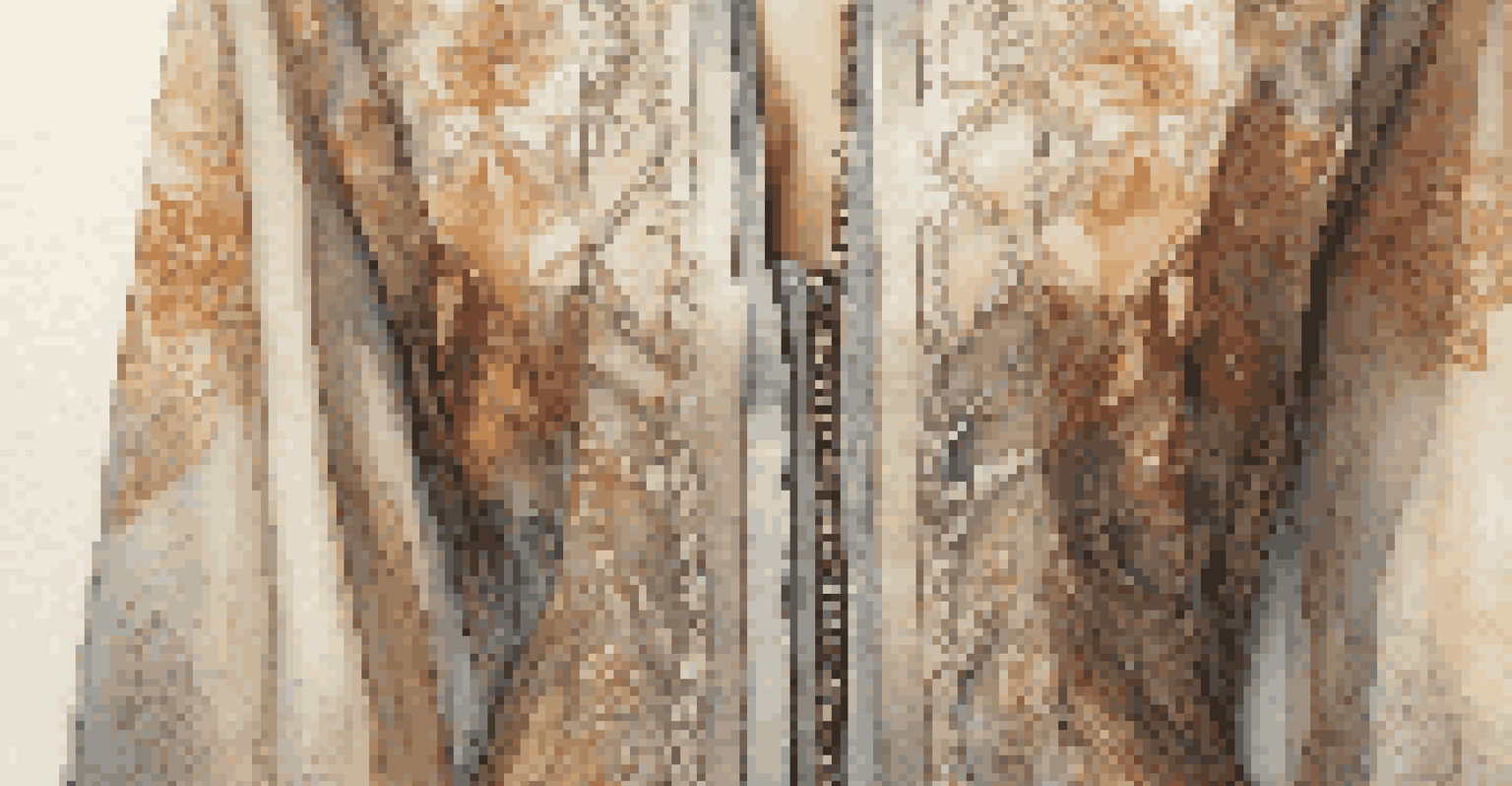The Intersection of Art and Fashion Throughout History

The Origins of Art and Fashion: A Harmonious Beginning
Art and fashion have been intertwined since the dawn of civilization. Ancient cultures used clothing not just for protection but as a canvas for artistic expression. From the intricate patterns of indigenous textiles to the vibrant dyes of ancient Egypt, each piece tells a story.
Fashion is the armor to survive the reality of everyday life.
These early expressions laid the groundwork for what we consider fashion today. Clothing was often adorned with symbols that conveyed social status or cultural beliefs, much like modern art reflects societal values. The artistry in clothing was a way to communicate identity long before the term 'fashion' was even coined.
As civilizations evolved, so did the relationship between art and fashion. The Renaissance, for example, saw a surge in artistic innovation that influenced clothing design, blending beauty and utility in ways that still resonate today.
The Renaissance: A Flourishing of Artistic Fashion
The Renaissance period marked a monumental shift in both art and fashion, with artists like Leonardo da Vinci and Botticelli influencing styles of the day. Clothing became more elaborate, with rich fabrics and intricate designs that mirrored the complex artistry of paintings and sculptures.

This era also emphasized the human form, leading to clothing that celebrated the body. Corsets, flowing gowns, and tailored suits all became canvases that showcased the artistic vision of the time. Fashion wasn’t just about looking good; it was about embodying the artistic spirit of the age.
Art and Fashion's Historical Ties
Art and fashion have been interconnected since ancient times, using clothing as a medium for cultural and social expression.
As artists became celebrities, they often collaborated with fashion designers, further blurring the lines between these two mediums. This collaboration set the stage for future partnerships that would continue to shape the industry.
The 20th Century: A Revolution in Style and Expression
The 20th century brought about a dramatic transformation in both art and fashion, particularly with movements like Cubism and Surrealism influencing design. Designers began to draw inspiration from artworks, creating pieces that echoed the abstract shapes and bold colors of contemporary art.
Art is the most beautiful of all lies; it is the truth that has been revealed to us in a way that we can understand.
Fashion icons like Coco Chanel and Yves Saint Laurent emerged during this time, reshaping how clothing was viewed in society. They introduced concepts that were as much about personal expression as they were about aesthetics, blending art and fashion into a cohesive narrative.
Moreover, the rise of pop culture and photography allowed fashion to be seen as an art form in itself. Street style became a canvas for self-expression, with everyday individuals showcasing their creativity, much like artists in galleries.
Art Movements That Shaped Fashion Trends
Throughout history, significant art movements have directly impacted fashion trends. For instance, the bold patterns of the Art Deco movement in the 1920s inspired designers to create glamorous outfits that mirrored the geometric designs of the time.
Similarly, the psychedelic art of the 1960s and 70s brought about a wave of vibrant colors and patterns in clothing, reflecting the counterculture movement. Fashion became a way for individuals to express their values and beliefs through their clothing choices.
Collaboration Drives Modern Design
Contemporary fashion increasingly involves collaborations between designers and artists, resulting in innovative and immersive collections.
These artistic influences continue to resonate, reminding us that fashion is not just about clothing but a dynamic form of expression that evolves alongside artistic innovation.
The Role of Art in Modern Fashion Design
In today's fashion world, art plays a crucial role in the design process, with many designers collaborating with artists to create unique collections. This partnership often leads to innovative pieces that challenge conventional fashion norms.
For example, the collaboration between fashion houses and contemporary artists has transformed runway shows into immersive art experiences. Designers like Alexander McQueen and Dolce & Gabbana have fused their collections with artistic themes, captivating audiences and pushing the boundaries of what fashion can be.
Moreover, art-inspired fashion often tells a story, giving depth to garments that go beyond mere aesthetics. This narrative element allows consumers to connect with pieces on a personal level, fostering deeper appreciation for the artistry involved.
Fashion as a Medium for Social Commentary
Fashion has evolved into a powerful medium for social commentary, often reflecting and challenging societal norms. Designers use their platforms to address issues such as gender equality, environmental sustainability, and cultural representation.
For instance, collections that incorporate recycled materials not only showcase creativity but also raise awareness about environmental issues. Similarly, fashion shows that celebrate diverse cultures can promote inclusivity and challenge stereotypes.
Fashion as Social Commentary
Fashion serves as a powerful platform for social commentary, addressing issues like sustainability and inclusivity through artistic expression.
Through these artistic expressions, fashion becomes a vehicle for change, encouraging dialogue and inspiring action. This intersection of art and fashion empowers individuals to express their beliefs and make a statement through what they wear.
The Future of Art and Fashion: A Collaborative Landscape
As we look to the future, the relationship between art and fashion is set to evolve even further. With technology playing an increasingly significant role, we can expect new forms of artistic expression within the fashion realm, such as digital art and virtual reality.
Moreover, the rise of social media has democratized the fashion industry, allowing emerging artists and designers to showcase their work to a global audience. This interconnectedness fosters collaboration and innovation, breaking down traditional barriers.

Ultimately, the future holds exciting possibilities for the fusion of art and fashion, where creative boundaries continue to blur, leading to dynamic expressions that reflect our ever-changing world.